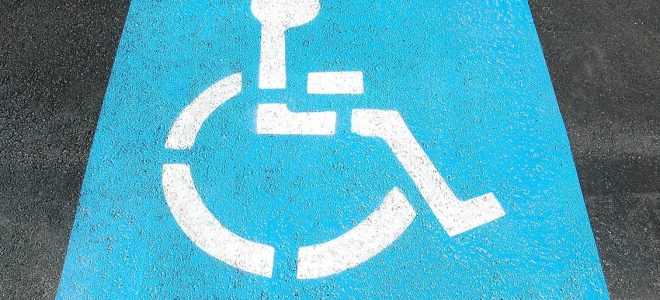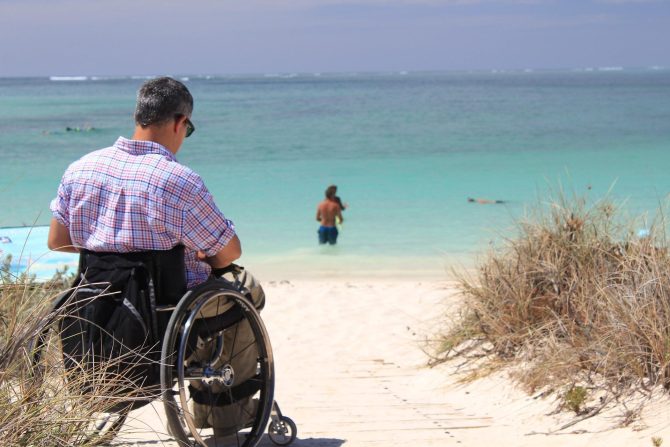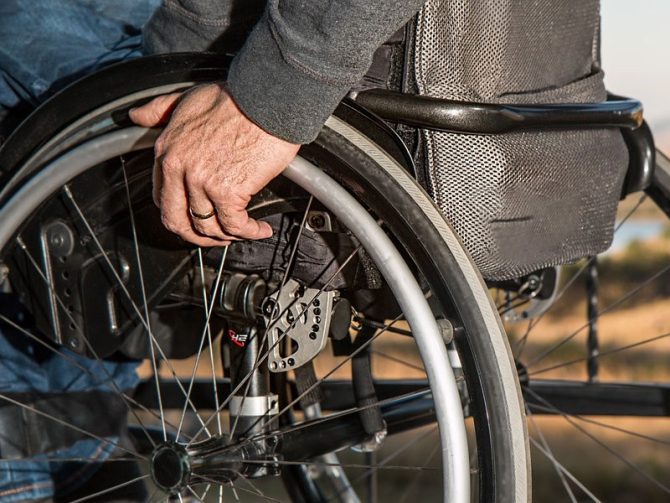
Minivans
The main advantage of accessible minivans is that they can be independently entered and exited. Wheelchair users can also move freely inside the vehicle’s cabin. This versatility is particularly important for wheelchair users who need to transfer to a seat. Many accessible vans or bigger transportation machines have something known as a transfer seat, which enables a wheelchair user to sit in a passenger seat while a caregiver drives.
However, these vans tend to have narrower ramps than minivans, which can be difficult for wheelchair users. The Companion Van is a great option for American families with wheelchair users in the mix. This affordable van offers the comfort and convenience of a traditional lowered-floor mobility van, while still giving space for four ambulatory adults and a secure position for one wheelchair.
Vans are more popular than ever. One of the most popular wheelchair accessible vans on the market today is the Dodge Grand Caravan, so if you’re looking to find a WAV maybe start there. The car has an accessible rear entry and side entry. It also has a lowered floor with a power ramp system, which makes it easy for wheelchair users to enter and exit.
Side-Entry Vehicles

Side-entry wheelchair accessible vehicles are vehicles with lowered floors. Side entry vehicles often feature removable front seats that allow wheelchair users to ride in the front passenger seat or even drive. Side-entry vehicles also feature a folding ramp or in-floor ramp that deploys from the passenger-side sliding door.
These vehicles can fit up to three users and up to five able-bodied passengers. In addition, side-entry vehicles can accommodate two or three extra passengers if an able-bodied driver is required. Some of these are adapted, which you can learn more about on the NHTSA Adapted Vehicles website. When shopping for handicapped transportation, remember that side-entry vehicles can be cheaper than rear entry ones because of why.
A side-entry vehicle is more convenient in confined parking spaces, since you don’t have to transfer to the driver’s seat. However, side-entry accessible vehicles may be harder to find and less convenient in high-traffic areas. In addition, rear entry accessible vehicles may not have enough space to accommodate a chair, so make sure you shop around before you buy.
Another benefit of side-entry vans is their greater resale value. Because a side-entry van is easier to sell than a rear-entry one, it has higher resale value but the side-entry vans are less expensive to convert than rear-entry vans, so they are often more affordable for the end-user. For those who want to upgrade to a side-entry van, make sure you read the reviews.
Adjustable and Self-Locking Ramps

Depending on the style of the vehicle, you may have to install an in-floor ramp if there is no space under the vehicle’s floor. Manual ramps are the cheapest type of ramps. They can be installed on the side of a vehicle or in the rear. Manual ramps require a caregiver to push the wheelchair up or down a ramp, so it’s important to select the right size for your chair. However, it’s important to consider how much weight your device will weigh.
ADA guidelines recommend that you choose a ramp with a 2:12 slope, which means that every two inches of rise needs one foot of ramp. You can read all the guidelines here: www.access-board.gov/ada/guides. For rear-entry cars, you can buy a ramp that has the same width as the passenger door or else you’re not going to get much use out of it.
This type is ideal for rear-entry vehicles such as the Dodge Grand Caravan. It’s also ideal for cars with rear-entry doors, such as the Toyota Sienna. Depending on the size of the chair, a rear-entry ramp with the same width as the front-entry vehicle is ideal. There are many types of chair ramps for vans so let’s not get into it, okay?
Financing Options

If you are thinking about purchasing handicapped transportation, you may be wondering about financing options. If you need support, click here: https://www.usa.gov/disability-financial-support.There are many different ways to finance these types of vehicles, and these options may vary from person to person. For example, you can use a bank loan to pay for your wheelchair accessible vehicle.
However, the cost of these vehicles is generally more than that of standard cars. There are several ways to finance handicapped transportation, including applying for a commercial loan through Brandl Mobility. When considering financing options for handicapped transportation, it is important to understand your options and to choose the best one for your needs.
While many banks will require a 10% down payment on the vehicle, some lenders may require a larger amount if you have a poor credit score. Using a wheelchair van financing calculator is a great way to get an estimate of what your payment will be. Some vehicle manufacturers even offer rebates on wheelchair accessible vehicles, which can help you pay for your new van.
If you can’t find a bank loan or credit card to cover the cost of handicapped transportation, you can search for nonprofit organizations that provide wheelchair accessible vehicle financing. For example, nonprofit organizations like the Muscular Dystrophy Family Foundation and the United Cerebral Palsy Foundation may be able to offer wheelchair accessible vehicle funding. Other nonprofit organizations might include Masons, Jaycees, and Easter Seals.



